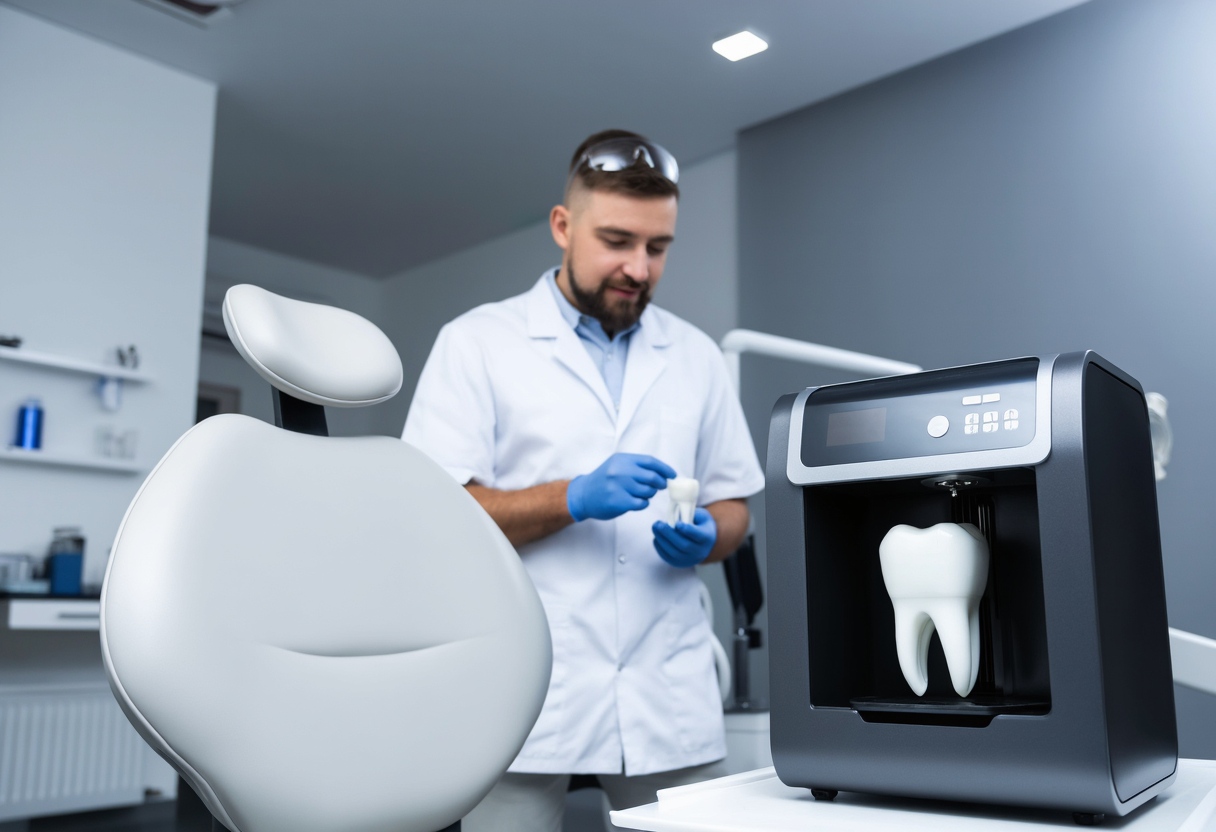Why 3D Printed Dental Implants Are the Future of Oral Health
The evolution of dental technology has brought about 3D printed dental implants, a revolutionary approach that promises individualization and efficiency in patient care. This article discusses their implications for the future of oral health and the dental profession.
Introduction to 3D Printed Dental Implants
3D printed dental implants are transforming how dental professionals approach restorative dentistry. Utilizing innovative technology, dental practitioners can create personalized implants that suit the specific needs of each patient, ensuring a superior fit and performance. This individualized approach not only enhances comfort but also boosts the overall success rate of oral implants. By streamlining the production process through 3D printing, dental offices can reduce the time and costs associated with conventional implant procedures. Therefore, the introduction of 3D printed dental implants represents a significant advancement in modern dentistry, catering to the growing demand for customized solutions.
Personalization: Key Advantage
One of the most compelling advantages of 3D printed dental implants lies in their personalization capabilities. This technology allows for the creation of implants that match the unique contours of a patient's mouth, promoting better integration with existing teeth and gums. By leveraging advanced imaging techniques, dental professionals gain insights into the patient's oral anatomy, facilitating the design of implants that blend seamlessly into their natural dental landscape. Furthermore, personalized implants yield higher success rates and lower instances of complications post-surgery. Hence, it becomes clear that personalization is not just a luxury but a necessity in today's dental practice, emphasizing the role of 3D printed dental implants in achieving optimal patient outcomes.
Impact on Clinical Efficiency
The impact of 3D printed dental implants extends beyond personalization; it significantly enhances clinical efficiency. The swift turnaround time from design to production allows dental practices to serve patients more effectively. Instead of waiting weeks for an implant to be manufactured off-site, patients can receive their custom implants in a fraction of the time. This immediate availability not only heightens patient satisfaction but also fosters a more efficient workflow in dental clinics. When clinicians can offer expedited services without compromising quality, it positions them favorably in a competitive market. Ultimately, the efficiency brought forth by 3D printed dental implants exemplifies how technology can streamline the dental care process.
Challenges and Considerations in Implementation
While the advantages are substantial, the transition to using 3D printed dental implants is not without its challenges. For one, not all dental professionals are adequately trained to utilize 3D printing technology, which may hinder its adoption in some practices. Furthermore, the initial investment in equipment and training may be prohibitive, particularly for smaller dental offices. Moreover, ensuring compliance with regulatory standards regarding safety and efficacy remains a crucial concern that practitioners must navigate. Additionally, as with any new technology, there is a learning curve involved, and practitioners may need time to become adept at utilizing 3D printing in their processes. Recognizing and addressing these challenges is essential for the successful integration of 3D printed dental implants into the dental landscape.
Looking Ahead: The Future of Oral Health
The future of oral health is inextricably linked to advancements like 3D printed dental implants. As the dental community continues to explore the possibilities this technology presents, we can expect to see a shift towards more efficient, tailored solutions for patients. Innovations in biocompatible materials will only enhance the benefits of 3D printed dental implants, ensuring they last and function effectively over time. Furthermore, as patient expectations evolve, the demand for customized dental solutions will grow stronger, pushing dental practices to adapt and embrace these technologies. Thus, the trajectory towards 3D printed dental implants signifies an exciting era for oral health, underpinned by patient-centered care and innovation.
Conclusion: Embracing Innovation in Dentistry
In conclusion, 3D printed dental implants are more than just a technological advance; they represent a paradigm shift in how dental care is delivered. The ability to produce personalized, high-quality implants efficiently is reshaping patient experiences and clinic operations. Despite the challenges faced, the ongoing developments in this field promise a future where dental treatments are more accessible, quicker, and better suited to individual needs. As we embrace innovation, the dental profession stands to gain significantly from the integration of 3D technology, ushering in a new chapter in oral health.
